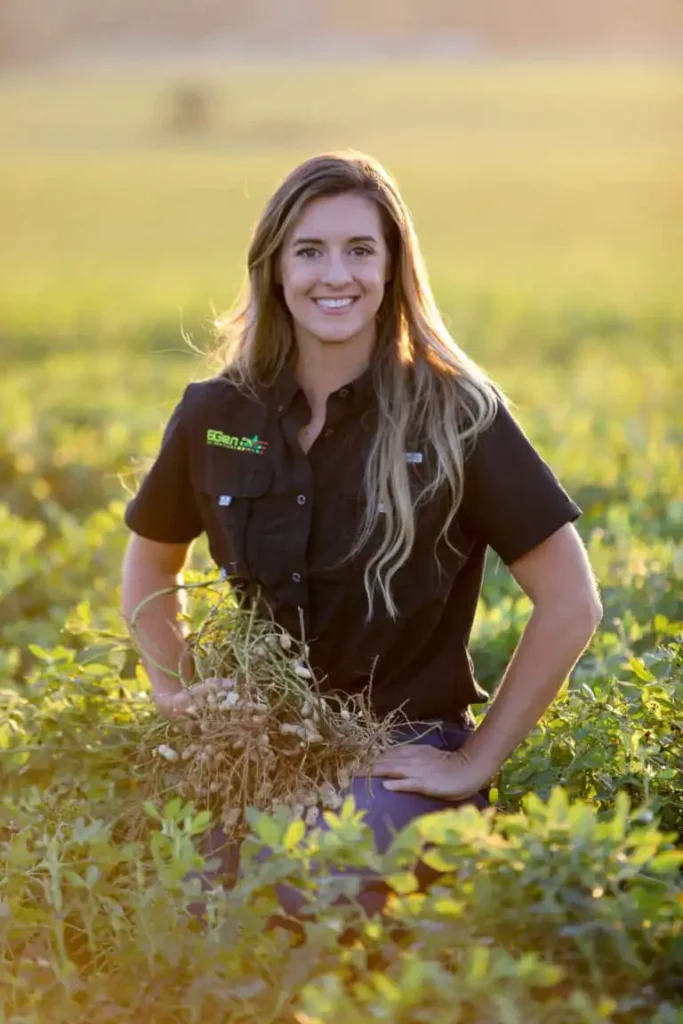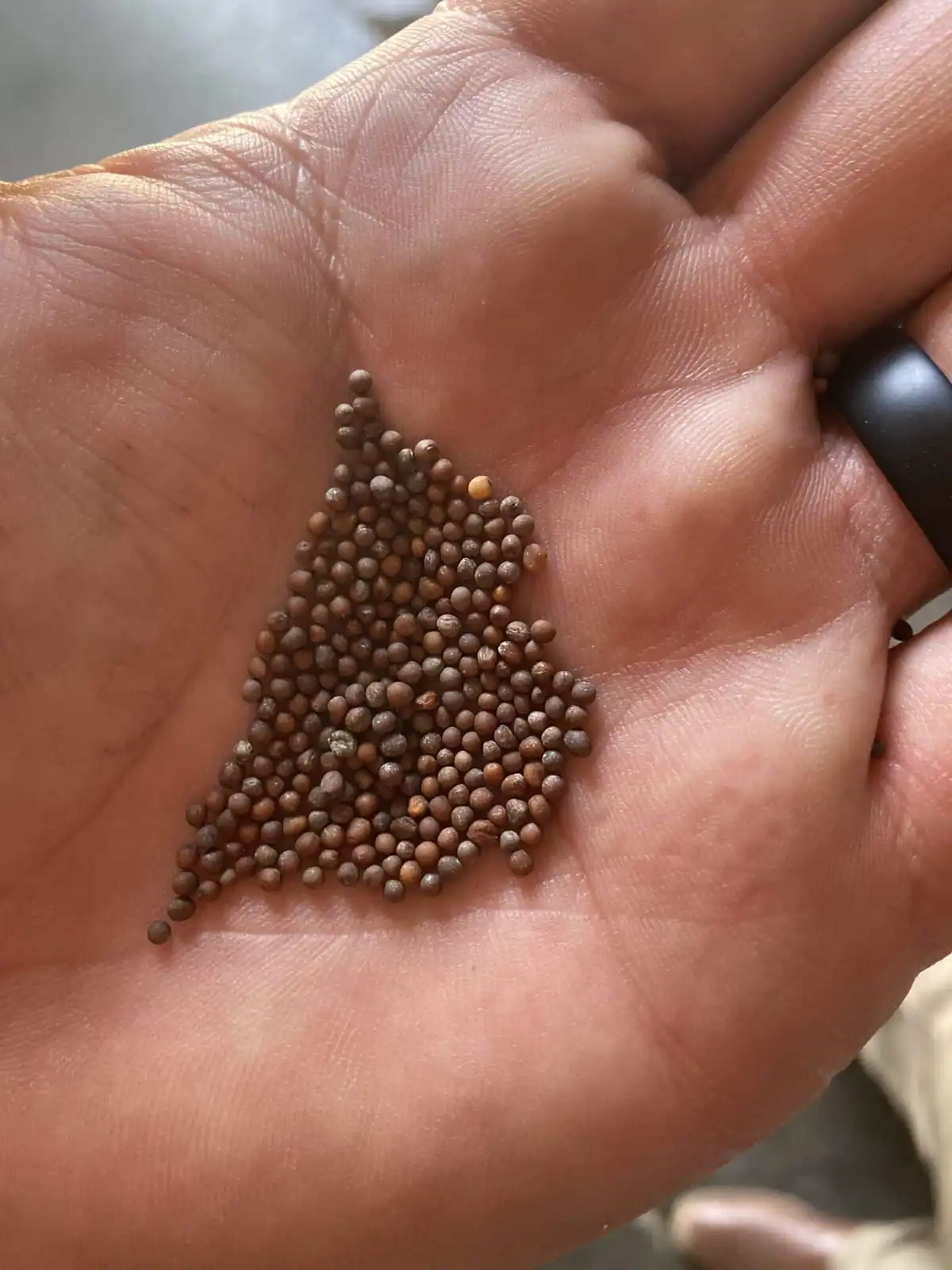Carbon-saving cover crop kicks off second season.
Brassica carinata, also known as Ethiopian mustard, has been researched for its cover crop soil benefits over the past decade in the Southeast U.S., and its harvested oilseed is taking off as a low-carbon feedstock capable of helping replace petroleum fuels to reduce emissions.
“It is a practical opportunity for growers to be rewarded or financially incentivized for regenerating soil, protecting nature, adopting sustainable practices and helping reduce, remove and restore carbon to mitigate climate change,” says Graham Collier, Nuseed Carinata global lead of product success.
Compared to canola
Carinata is related to canola or rapeseed, but it achieved a higher seed yield than canola in north-Florida field studies.
“Carinata’s outstanding performance was evident in replicated yield trials in the region, where it achieved seed production of 2,500 pounds per acre, outperforming canola at 1,300 pounds per acre, and camelina at 850 pounds per acre,” says Ramdeo Seepaul, University of Florida research assistant scientist, citing research published by George et al. in 2021.

Carinata has a high oil content, ranging from 40% to 46%, as well as a high erucic acid content, typically ranging between 40% and 44%.
“Erucic acid is a very-long-chain mono-unsaturated fatty acid with 22 carbon atoms giving carinata its distinctive composition,” Seepaul explains. “This high proportion of very long-chain fatty acids relative to shorter or saturated ones makes carinata oil exceptionally well-suited for various biofuel conversion technologies.”
Carinata also has a high energy potential and a higher molecular weight compared to oils like soybean or canola, which results in a higher yield of hydrocarbon fuels and chemicals during biofuel production.
However, Collier says it’s not necessarily in competition with the other crops as scientists are currently researching carinata as a cover crop in this region.
“We really don’t want to influence a shift in market share for other crops. What we want to see is existing cropland being protected and improved for the next main crop by adding Nuseed Carinata into the growing system when soil would typically be bare and vulnerable to degradation,” he explains.
Cover crop opportunities
Despite many agronomic benefits, only about 8% of agricultural lands are currently planted in cover crops over the winter in Florida.
“In our environment, we don’t typically get any money back on the seed investment for a cover crop,” says De Broughton, a crop consultant with 6 Gen Ag Services and a field agent for Nuseed.
That said, there’s no question that coastal plain soils in particular, which often have very limited organic matter, would benefit from cover cropping.
“Carinata is a high-residue biomass crop,” Seepaul says. “It can produce up to 9,000 pounds of biomass per acre, and since only the seed is harvested (about 2,000 pounds per acre), around 7,000 pounds of biomass is returned to soil. It’s also a nutrient scavenger, so it’s able to remove more nutrients than we’ve applied without depleting soil health.”
In addition, root nematodes are one of the area’s biggest concerns, resulting in high levels of investment for chemicals and fumigants. Broughton says using a brassica breaks that cycle.
Growing pains
While growers have access to best practices for success with carinata, Collier realizes there are still challenges to successfully producing the crop.
“Growers need to manage planting and harvesting of physically small seeds and manage broadleaf weeds within a broadleaf crop,” he says.

Even if growers are used to planting small crops, carinata is even smaller.
“It’s different than the way we normally seed and sometimes we recommend using a cultipacker or roller to firm up the seed bed,” Broughton says. “It’s just very tricky because it can get too deep. It’s almost better to have it laying on the surface.”
Broughton encourages growers to not think of carinata as just a cover crop that requires little to no management. However, it doesn’t require the kind of input and management of traditional cash crops either.
“It’s sort of in-between, and while it’s a new crop, there is already a lot of data in terms of nutrient and water demand,” she says.
Improving varieties
Perhaps the biggest challenge with carinata is fitting it into existing crop rotations.
“We’re having to squeeze in peanuts at the end of their season and carinata also definitely overlaps with corn. More cultivars give us more flexibilities,” Broughton says.
Currently, carinata fits well with cotton and soybeans, but breeders are working to shorten the growing season.
“The crop cycle is generally 180 days, but we are screening for varieties that would be 160 to 165 days,” Seepaul says. “If we can harvest that much earlier, we can fit the subsequent crop in without any delay.”
Carinata doesn’t follow peanuts well due to its sensitivity to carryover herbicides, particularly Cadre herbicide, which is often crucial for a successful peanut crop.
“Resistance to Cadre would be a game changer, so that’s a priority for breeding research right now, and as we head in that direction, I believe we’ll see carinata rise to the top of being a staple,” Broughton says.
Managing a monopoly
Nuseed was first to hybridize carinata, allowing for rapid genetic advancement after acquiring Canadian-based Agrisoma carinata assets in 2019. The 2023 crop is Nuseed’s second season commercially growing carinata in the United States. Production is under contract using sustainable farming practices certified by the Roundtable on Sustainable Biomaterials. The International Civil Aviation Organization modeling approach determined those practices can improve greenhouse gas savings by up to 80%.

“Currently we have the only commercial carinata program, by being first to market,” Collier says. “We are working towards full commercial certified sustainable production between main crop rotations, with an initial focus between cotton and peanut acres across Florida, Georgia and Texas, and between other rotations in additional Southeastern states within the next few years.”
Globally, Nuseed Carinata is in the fifth year of commercial production in Argentina with additional production in Uruguay. Nuseed harvested more than 35,000 hectares in South America in 2022 and Collier says they are also working to begin commercial production in Brazil in 2024, with additional plans for Europe and Australia.
“There are many innovations and feedstocks in the market, and with the rapidly growing demand for lower carbon replacements to fossil oils we expect many more,” he says.
Future focus
Despite research partners in seven states and a decade of research into the crop, the United States is still in the early stages of its carinata journey.
“In general, there is a significant lack of awareness about carinata as a crop; it largely remains relatively unknown in the region,” Seepaul says, noting seed suppliers will have to work diligently with growers to sell the value of the crop.
“I think growers are looking at carinata to fill in a gap, but there is always a risk,” Broughton says. “They have to feel really comfortable with the price they lock in when they are doing something new.”
With focused support, carinata could find a place as a new and value option in U.S. crop fields.
To that end, the Southeast Partnership for Advanced Renewables from Carinata is a collaborative effort between regional land grant universities, industry partners and other institutions that aim to support commercial carinata production as a viable winter crop in the Southeast United States.
Nuseed’s parent company, Nufarm, reported the 2022-23 U.S. carinata season included more than 6,000 commercial acres.
“On the agricultural front, optimizing carinata cultivation practices, scaling production, and fostering widespread adoption of winter carinata production are vital,” Seepaul says. “The technology development and aviation sectors must invest in research and technology for more efficient sustainable aviation fuel production while working to establish the necessary infrastructure.”
Seepaul says these collaborative efforts will also require adequate policy and incentives.
“Bridging the gap between the present state and the realization of this carbon-saving potential requires a holistic commitment to innovation and sustainability in both sectors,” he says.











